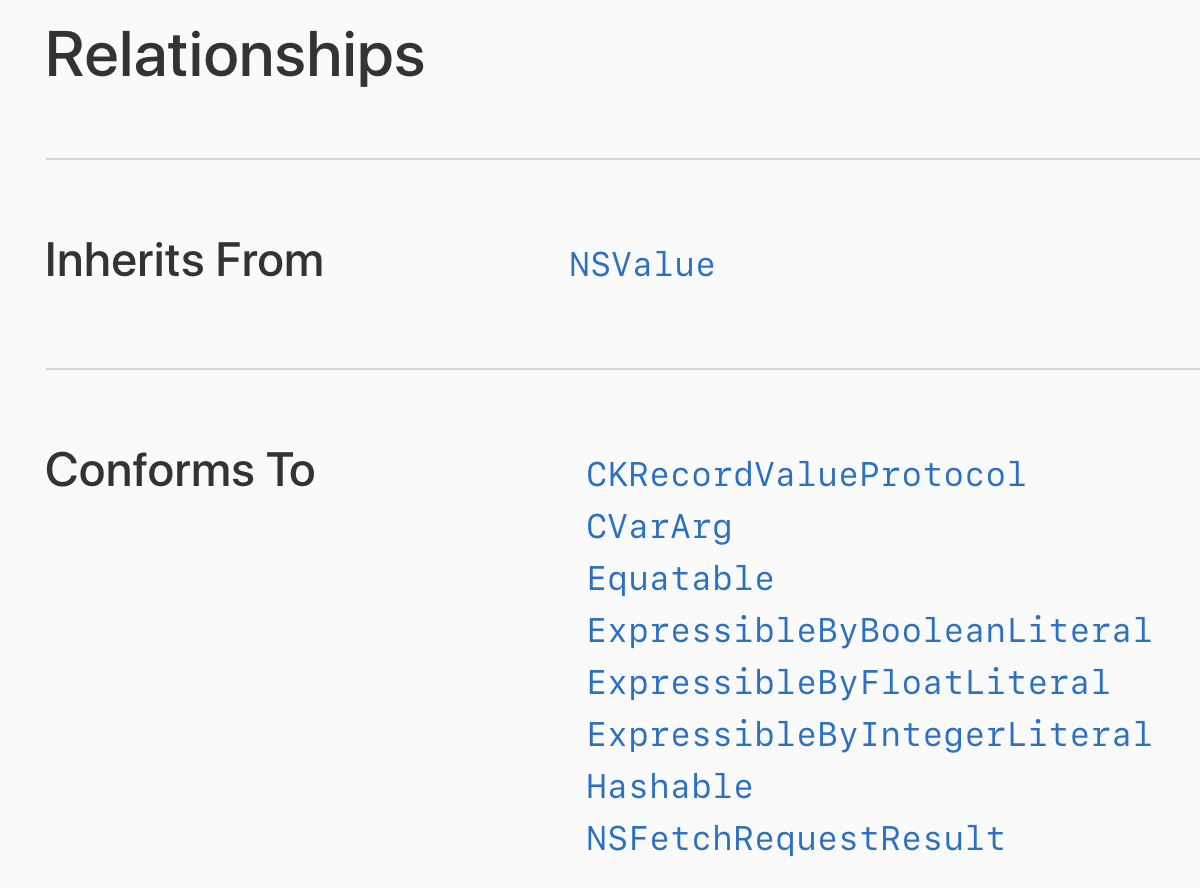WWDC19でお目見えしたXcode 11ですが、ライブラリ・フレームワークの配布形態として .xcframework という新しいフォーマットが導入されています。
https://developer.apple.com/documentation/xcode_release_notes/xcode_11_beta_release_notes/#3318305
XCFrameworks make it possible to bundle a binary framework or library for multiple platforms —including iOS devices, iOS simulators, and UIKit for Mac — into a single distributable .xcframework bundle that your developers can use within their own applications. An .xcframework bundle can be added to an Xcode target’s Link Libraries phase and Xcode uses the right platform’s version of the included framework or library at build time. Creation of XCFrameworks is supported from the command line using xcodebuild -create-xcframework. Frameworks or libraries bundled in an XCFramework should be built with the Build Libraries for Distribution build setting set to YES. (49948269)
このフォーマットの導入は、リリースノートにも書かれているようにUIKit for Mac(Project Catalyst)と関係していそうです。それだけではなく、Swift 5.1でのModule Stability*1サポートによる、Swiftで書かれたフレームワークのバイナリ配布とも関連した動きに見えます。
これまでは、各種SDKなどでiOS用のフレームワーク(.framework形式)を配布する場合、iOSシミュレーター用のframeworkと、iOSデバイス用のframeworkをそれぞれビルドしてから、frameworkのバンドル内に含まれるバイナリをlipoコマンドで結合して1つのframeworkにする、という手段が取られていました。Carthageでframeworkをビルドする時もこうした処理が行われています。
ただしこの方法には少し問題があり、iOSアプリをApp Storeに提出する際のバリデーションで、アプリに含まれるframeworkのバイナリにシミュレーター用のCPUアーキテクチャーのスライスが含まれているとバリデーションで蹴られてしまいます。そのためストア提出用のリリースビルドを行う際には、lipoコマンドでシミュレーター用のスライスを取り除く必要があります。Carthageではこの問題の対処として、アプリにframeworkを組み込む際にcarthage copy-frameworksコマンドを使うようになっています。
一方、新しい.xcframework形式では、複数の.frameworkを1つのバンドル(ディレクトリ)にまとめる構造となっています。この構造では、アプリをデバイス向けにビルドする時にはxcframework内のデバイス用のframework、シミュレーター向けにビルドする時にはシミュレーター用のframeworkを使うことができるので、ストア提出用のアプリにシミュレーター用のスライスが含まれてしまうということが起きなくなります。Carthageでもxcframeworkがサポートされると、copy-frameworksコマンドを使用する必要がなくなることが期待できます*2。
実際に.xcframeworkを生成してディレクトリ構造を確認してみました。シミュレーター用・デバイス用・UIKit for Mac用のframeworkは先にビルドした上で、xcframeworkの生成は次のコマンドで行えます:
$ xcodebuild -create-framework \
-framework iphonesimulator/Himotoki.framework \
-framework iphoneos/Himotoki.framework \
-framework uikitformac/Himotoki.framework \
-output Himotoki.xcframework
ディレクトリ構造は次のようになっていました。
$ tree Himotoki.xcframework
Himotoki.xcframework
├── Info.plist
├── ios-armv7_arm64
│ └── Himotoki.framework
│ ├── Headers
│ │ ├── Himotoki-Swift.h
│ │ └── Himotoki.h
│ ├── Himotoki
│ ├── Info.plist
│ └── Modules
│ ├── Himotoki.swiftmodule
│ │ ├── arm.swiftdoc
│ │ ├── arm.swiftinterface
│ │ ├── arm.swiftmodule
│ │ ├── arm64-apple-ios.swiftdoc
│ │ ├── arm64-apple-ios.swiftinterface
│ │ ├── arm64-apple-ios.swiftmodule
│ │ ├── arm64.swiftdoc
│ │ ├── arm64.swiftinterface
│ │ ├── arm64.swiftmodule
│ │ ├── armv7-apple-ios.swiftdoc
│ │ ├── armv7-apple-ios.swiftinterface
│ │ ├── armv7-apple-ios.swiftmodule
│ │ ├── armv7.swiftdoc
│ │ ├── armv7.swiftinterface
│ │ └── armv7.swiftmodule
│ └── module.modulemap
├── ios-i386_x86_64-simulator
│ └── Himotoki.framework
│ ├── Headers
│ │ ├── Himotoki-Swift.h
│ │ └── Himotoki.h
│ ├── Himotoki
│ ├── Info.plist
│ ├── Modules
│ │ ├── Himotoki.swiftmodule
│ │ │ ├── i386-apple-ios-simulator.swiftdoc
│ │ │ ├── i386-apple-ios-simulator.swiftinterface
│ │ │ ├── i386-apple-ios-simulator.swiftmodule
│ │ │ ├── i386.swiftdoc
│ │ │ ├── i386.swiftinterface
│ │ │ ├── i386.swiftmodule
│ │ │ ├── x86_64-apple-ios-simulator.swiftdoc
│ │ │ ├── x86_64-apple-ios-simulator.swiftinterface
│ │ │ ├── x86_64-apple-ios-simulator.swiftmodule
│ │ │ ├── x86_64.swiftdoc
│ │ │ ├── x86_64.swiftinterface
│ │ │ └── x86_64.swiftmodule
│ │ └── module.modulemap
│ └── _CodeSignature
│ └── CodeResources
└── ios-x86_64-uikitformac
└── Himotoki.framework
├── Headers -> Versions/Current/Headers
├── Himotoki -> Versions/Current/Himotoki
├── Modules -> Versions/Current/Modules
├── Resources -> Versions/Current/Resources
└── Versions
├── A
│ ├── Headers
│ │ ├── Himotoki-Swift.h
│ │ └── Himotoki.h
│ ├── Himotoki
│ ├── Modules
│ │ ├── Himotoki.swiftmodule
│ │ │ ├── x86_64-apple-ios-macabi.swiftdoc
│ │ │ ├── x86_64-apple-ios-macabi.swiftinterface
│ │ │ ├── x86_64-apple-ios-macabi.swiftmodule
│ │ │ ├── x86_64.swiftdoc
│ │ │ ├── x86_64.swiftinterface
│ │ │ └── x86_64.swiftmodule
│ │ └── module.modulemap
│ └── Resources
│ └── Info.plist
└── Current -> A
ios-armv7_arm64にデバイス用のframeworkが、ios-x86_64-simulatorにシミュレーター用のframeworkが、そしてios-x86_64-uikitformacにUIKit for Mac用のframeworkが含まれていることが分かります。
またトップレベルのInfo.plistの内容は次のようになっていました。
<?xml version="1.0" encoding="UTF-8"?> <!DOCTYPE plist PUBLIC "-//Apple//DTD PLIST 1.0//EN" "http://www.apple.com/DTDs/PropertyList-1.0.dtd"> <plist version="1.0"> <dict> <key>AvailableLibraries</key> <array> <dict> <key>LibraryIdentifier</key> <string>ios-x86_64-uikitformac</string> <key>LibraryPath</key> <string>Himotoki.framework</string> <key>SupportedArchitectures</key> <array> <string>x86_64</string> </array> <key>SupportedPlatform</key> <string>ios</string> <key>SupportedPlatformVariant</key> <string>uikitformac</string> </dict> <dict> <key>LibraryIdentifier</key> <string>ios-armv7_arm64</string> <key>LibraryPath</key> <string>Himotoki.framework</string> <key>SupportedArchitectures</key> <array> <string>armv7</string> <string>arm64</string> </array> <key>SupportedPlatform</key> <string>ios</string> </dict> <dict> <key>LibraryIdentifier</key> <string>ios-i386_x86_64-simulator</string> <key>LibraryPath</key> <string>Himotoki.framework</string> <key>SupportedArchitectures</key> <array> <string>i386</string> <string>x86_64</string> </array> <key>SupportedPlatform</key> <string>ios</string> <key>SupportedPlatformVariant</key> <string>simulator</string> </dict> </array> <key>CFBundlePackageType</key> <string>XFWK</string> <key>XCFrameworkFormatVersion</key> <string>1.0</string> </dict> </plist>
xcodebuild -create-xcframeworkコマンドの-frameworkオプションの数を増やすことで、ここにmacOS、tvOS、watchOS用のビルドも追加することができるはずです。
また.frameworkだけでなく、.aのstatic libraryや.dylibのdynamic libraryとそれ用のヘッダーをバンドルすることもできるようになっています。コマンドのヘルプの出力も載せておきます。
$ xcodebuild -create-xcframework -help OVERVIEW: Utility for packaging multiple build configurations of a given library or framework into a single xcframework. USAGE: xcodebuild -create-xcframework -framework <path> [-framework <path>...] -output <path> xcodebuild -create-xcframework -library <path> [-headers <path>] [-library <path> [-headers <path>]...] -output <path> OPTIONS: -framework <path> Adds a framework from the given <path>. -library <path> Adds a static or dynamic library from the given <path>. -headers <path> Adds the headers from the given <path>. Only applicable with -library. -output <path> The <path> to write the xcframework to. -help Show this help content.
今後の各種ツールやSDKでのサポートに期待したいですね。
